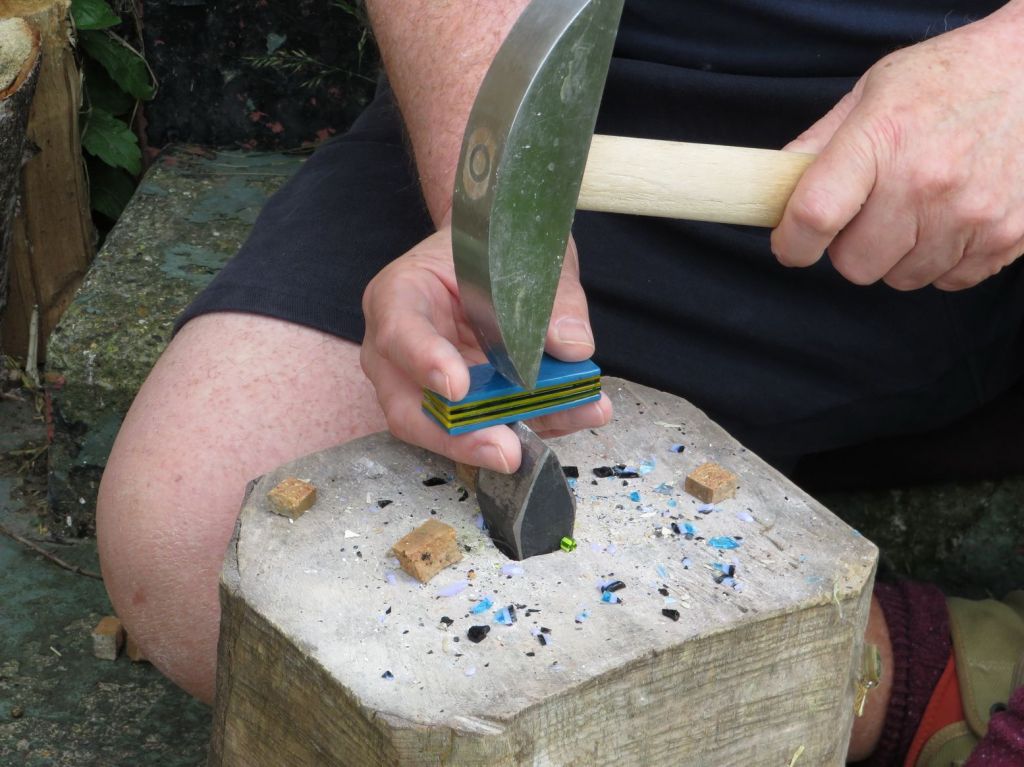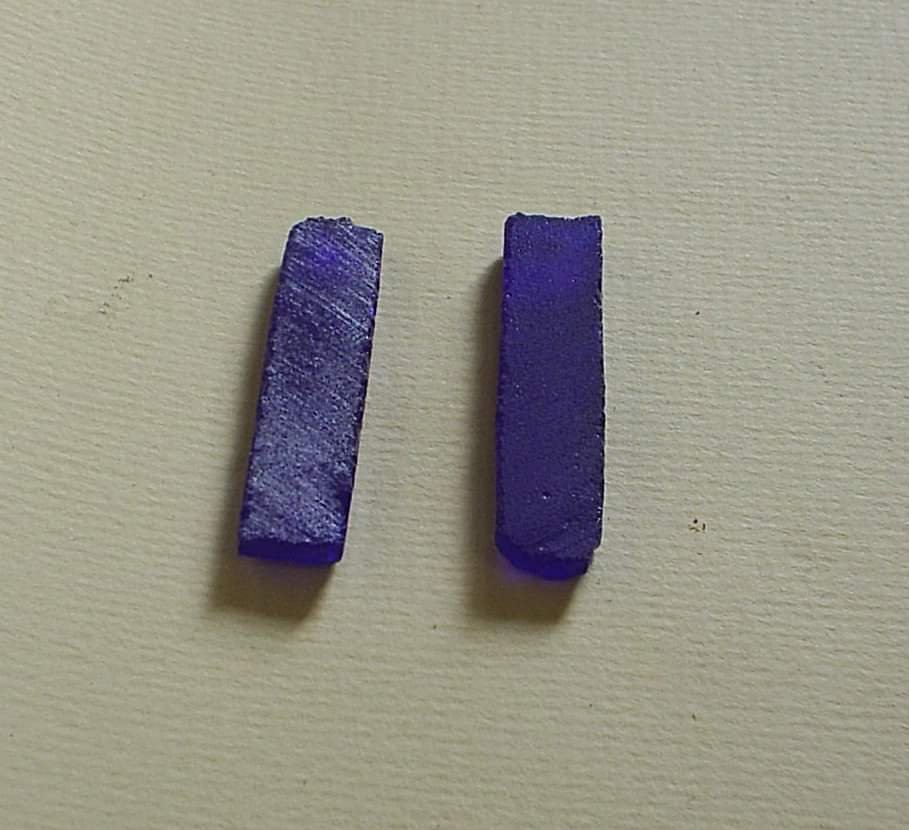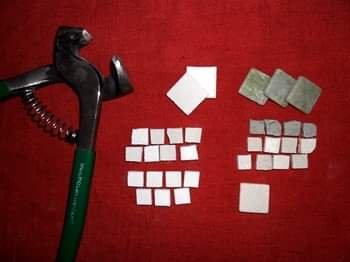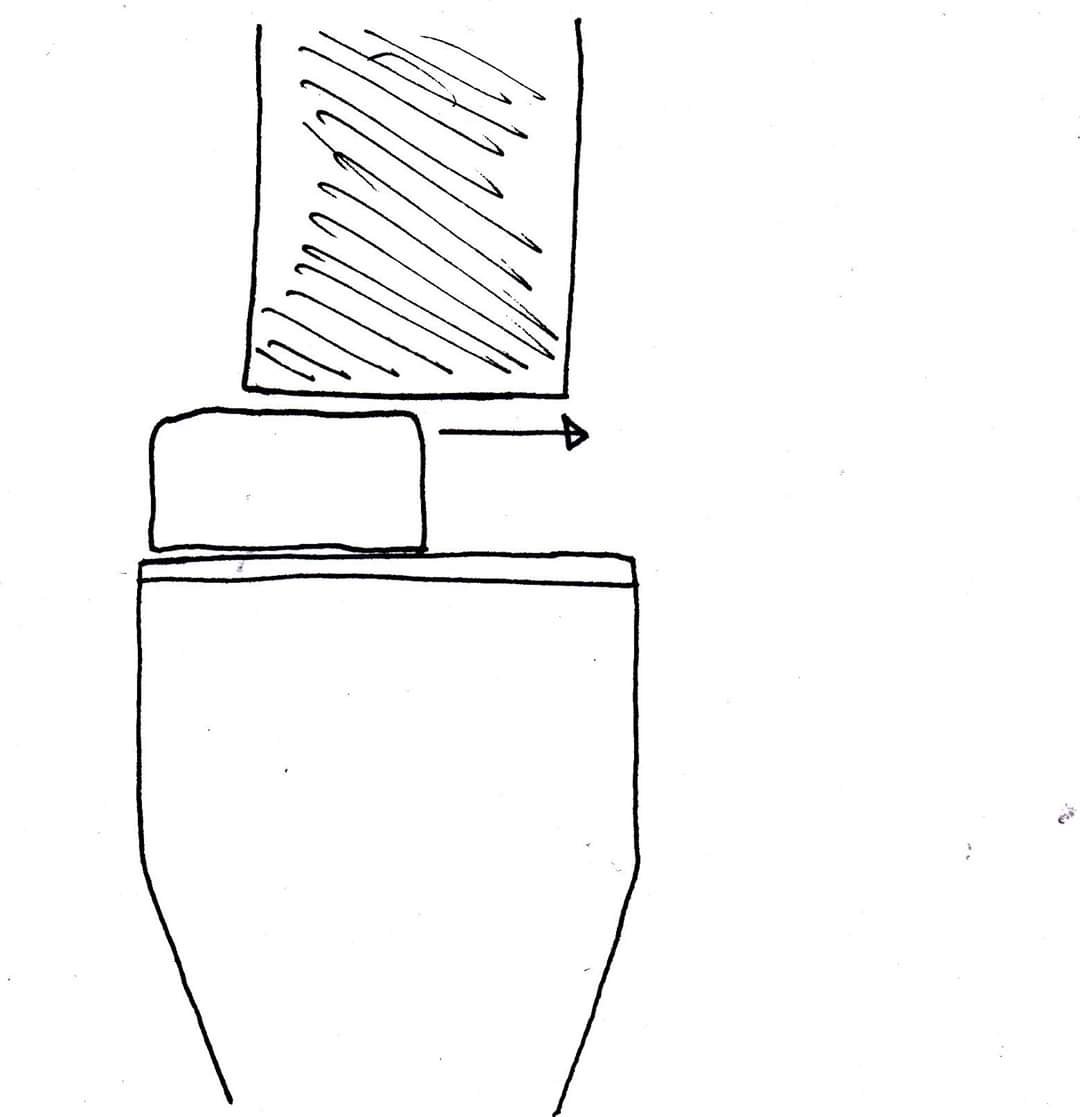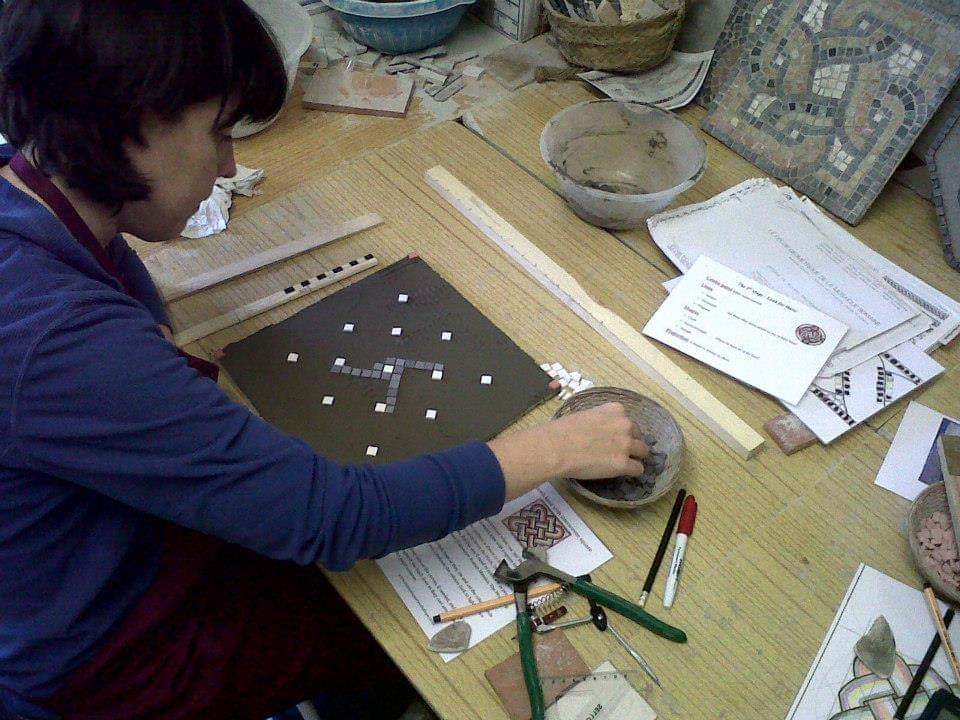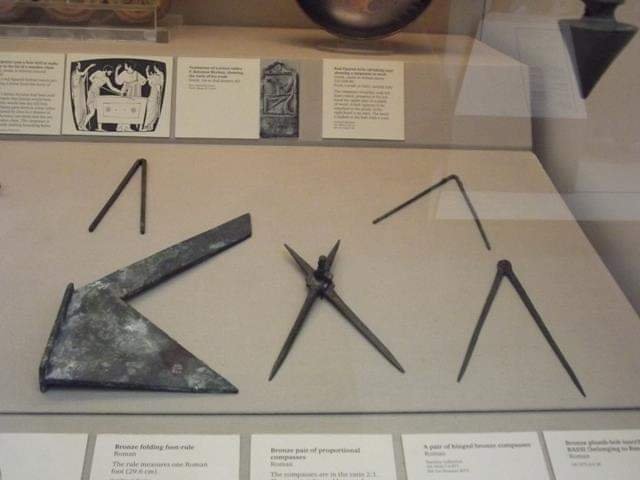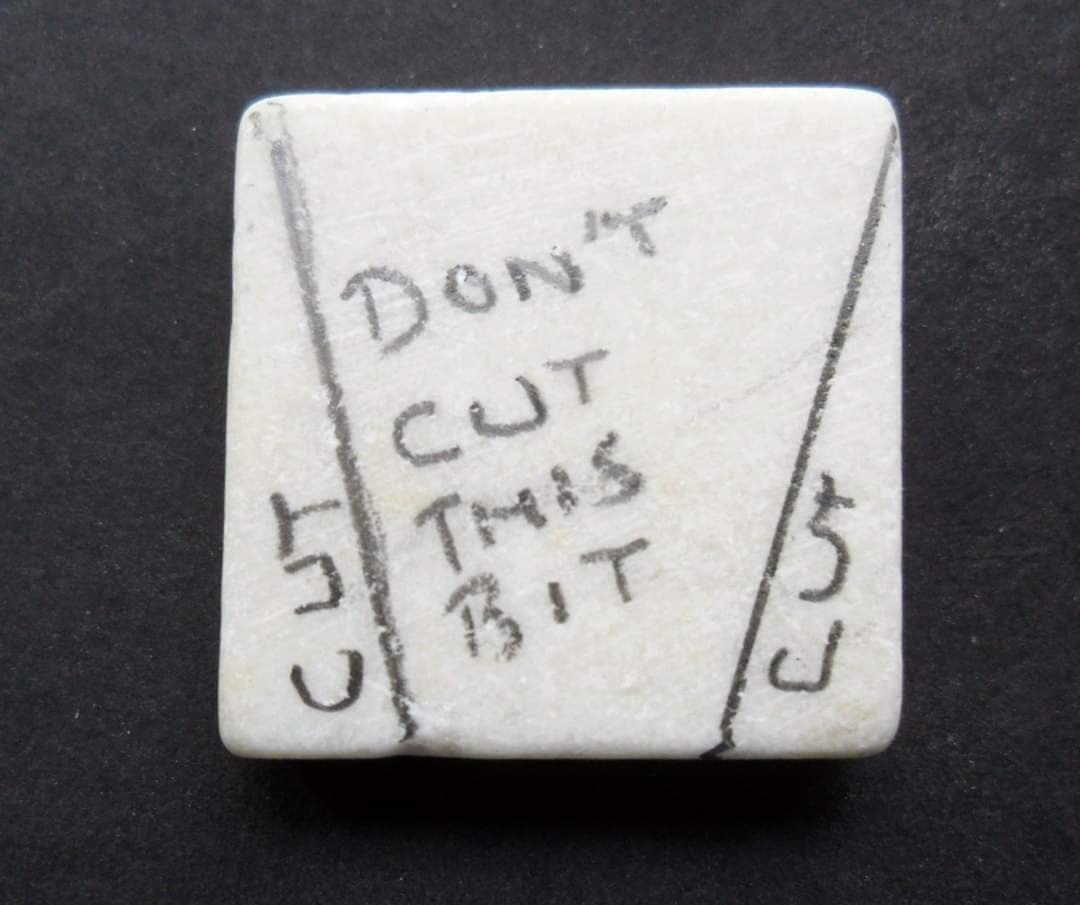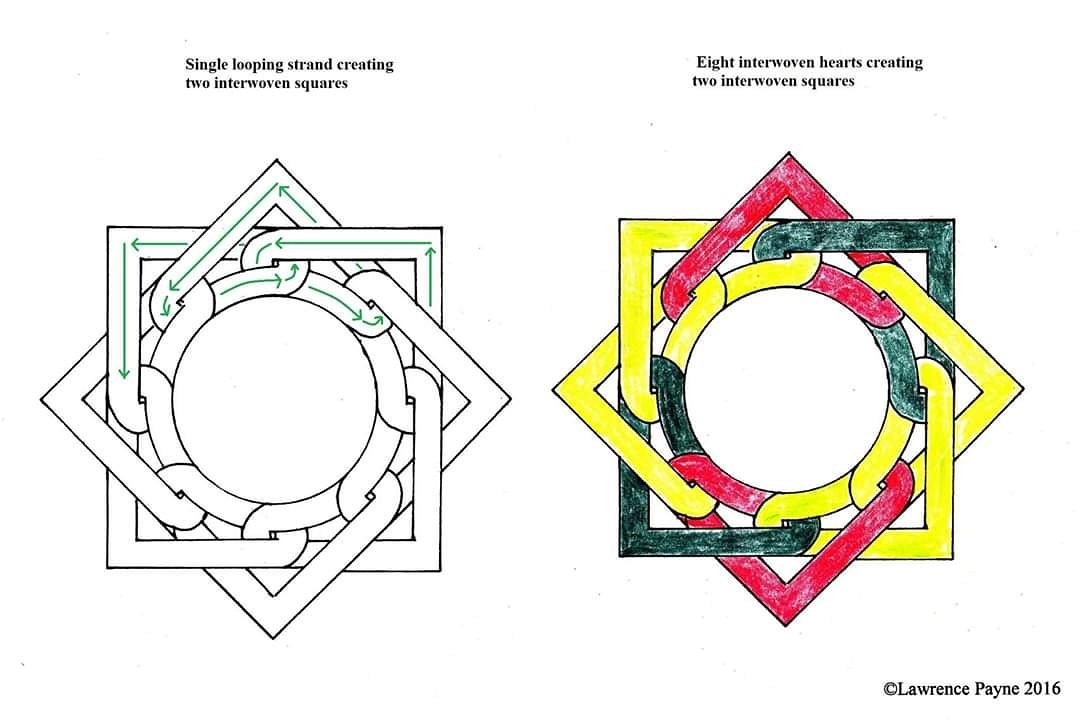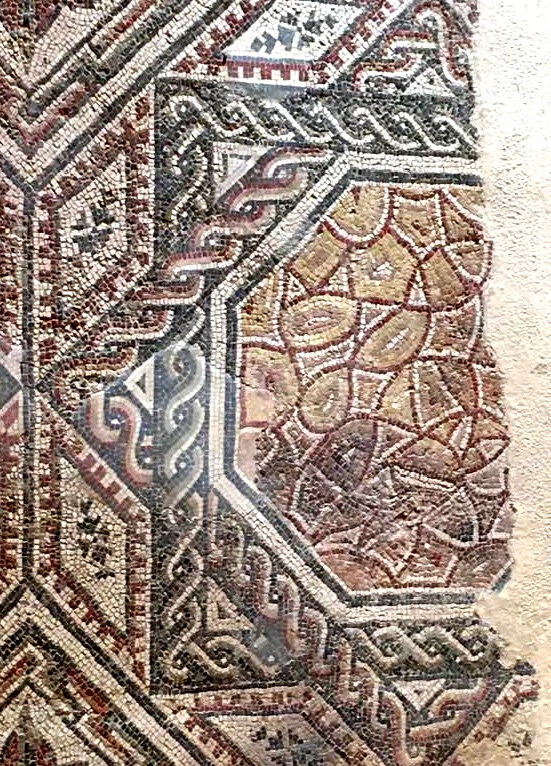
This is a mosaic from Piazza Amerina in Sicily and the part that is the most interesting is that on the right of this photo. I must admit it does remind me of what you can see under a microscope! Obviously it is not but what does it represent?
To me it looks like they are trying to represent a section of marble that has been sliced to show the different veins and colours. (Photo Helen Bodycomb)
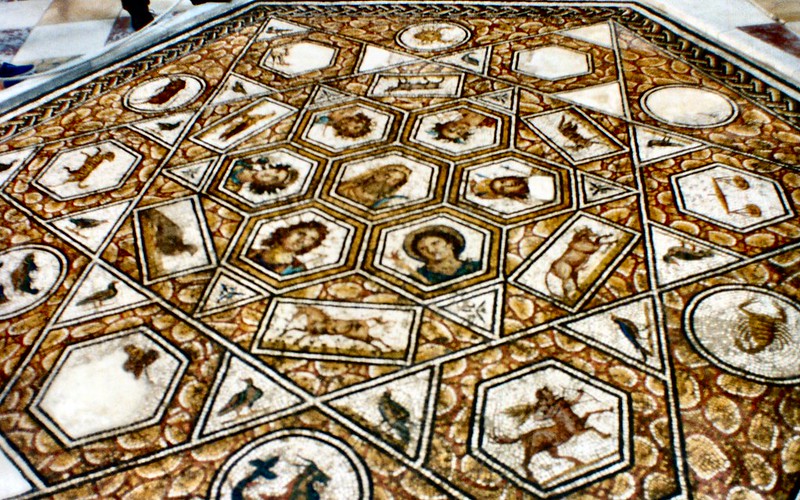
Now look at this example from the Bardo Museum in Tunisia. Notice the similarities in style and I am sure there is at least one more example. Given the amount of work involved in cutting marble into sheets I do think this is a possible explanation for the effect seen here. What do you think?
